Who invented the dishwasher?
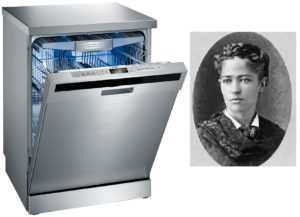 Some modern housewives believe that it was a woman who invented the dishwasher to make hard work easier, because housekeeping is also work, and not easy work. In fact, history has preserved some information about the man who was the first in the world to design and manufacture a dishwasher. It is his invention, as well as the historical evolution of dishwashing equipment, that we will talk about today.
Some modern housewives believe that it was a woman who invented the dishwasher to make hard work easier, because housekeeping is also work, and not easy work. In fact, history has preserved some information about the man who was the first in the world to design and manufacture a dishwasher. It is his invention, as well as the historical evolution of dishwashing equipment, that we will talk about today.
First dishwasher
Dishwashing devices are often mentioned in various historical sources. Presumably, such devices were known to the Romans, but not a single image or even a verbal description of such devices has survived, which means that history has not preserved the name of the brilliant inventor of the first dishwasher.
The first documented mention of a dishwasher dates back to 1850. In the scientific world, this year is considered the year of the invention of the dishwashing unit. The design of this unit was patented by the young American Guoton, although his invention, to be honest, was a complete failure and had no economic prospects.
This is exactly the case when the idea is good, but its implementation is extremely bad. Only one prototype of the Guoton machine was made, testing of which immediately showed the inconsistency of the design of this invention
 By the way, almost at the same time King invented the washing machine, so these two household units have been going side by side since their invention. However, the washing machine is far more popular than the dishwasher.There are few housewives around the world who are unfamiliar with washing machines, but many still prefer to wash dishes by hand, especially in Russia and the CIS countries.
By the way, almost at the same time King invented the washing machine, so these two household units have been going side by side since their invention. However, the washing machine is far more popular than the dishwasher.There are few housewives around the world who are unfamiliar with washing machines, but many still prefer to wash dishes by hand, especially in Russia and the CIS countries.
The inventor of the dishwasher made a hand-cranked contraption that had a tank, a piston pump to supply water, a complex frame to hold the tank, and a handle to operate the pump. The main advantage of this invention was the revolutionary idea, which enabled housewives to hope for the soon appearance of a truly effective “home assistant.” Well, Guoton’s invention had much more disadvantages than advantages.
- The dishes in his car were hardly washed at all.
- It was difficult to place dishes in the tank, which often caused them to break.
- The supply of water to dirty dishes was not thought out, which is why water did not get to some of the kitchen utensils placed in the tank at all.
- There was no system for pumping out waste water and supplying clean water, so the dishes were rinsed with the same water that was used for washing.
Creation of women's hands
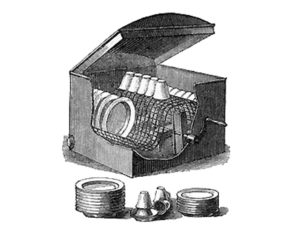 We found out who invented the dishwasher, and at the same time we learned that the first dishwasher design turned out to be unviable, since it did not perform its main function at all. Why did it happen? Perhaps because Guoton was far from home economics or did not fully understand the mechanism of washing dishes. In any case, we will no longer know the truth, since information about the circumstances of the invention’s appearance has sunk into oblivion along with the inventor.
We found out who invented the dishwasher, and at the same time we learned that the first dishwasher design turned out to be unviable, since it did not perform its main function at all. Why did it happen? Perhaps because Guoton was far from home economics or did not fully understand the mechanism of washing dishes. In any case, we will no longer know the truth, since information about the circumstances of the invention’s appearance has sunk into oblivion along with the inventor.
What's next? But then a woman got down to business, who sincerely and with great desire set about developing the first mass-produced manual dishwasher. This woman's name was Josephine Cochrane.Unlike Guoton, the enterprising Josephine not only managed to make a working manual dishwasher, but also built a primitive water heater into it. The first dishwasher made by a woman consisted of the following parts.
- A wooden or metal box that acts as a washing hopper.
- A basket for dishes, which was presented in the form of a curved metal lattice, on which mainly plates, saucers and cups were placed.
- Manual drive mechanism.
- Two piston pumps.
- A hinged lid that hermetically closed the drawer with dishes.
- Water heater.
This car had quite a lot of advantages, which is why it began to sell successfully. Firstly, she washed dishes quite well, especially saucers and plates. Secondly, this dishwasher heated the water itself, making it possible to wash dishes with hot water. Thirdly, it had a compact and convenient body, as well as a basket that securely fixed the dishes, which practically eliminated their breaking during washing and storage.
There were advantages, but there were also disadvantages, and significant ones at that. The Cochrane machine could not wash large and non-standard dishes, and it was also impossible to wash cutlery in it. The machine was manual, which meant that the owner had to stand nearby and turn the handle, a very tedious task, perhaps even more tedious than washing dishes by hand. And most importantly, this dishwasher was very expensive and only very wealthy households could afford it, which ultimately decided the fate of this, in its own way, revolutionary invention.
Josephine Cochrane released several modifications of her creation.In the latter version, the machine was supposed to not only wash, but also dry dishes, although the design turned out to be too bulky, expensive and did not gain popularity, unlike the very first model.
The first electric dishwasher
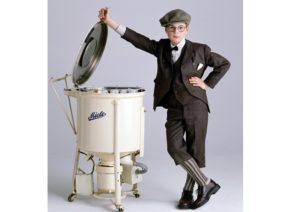 The inspiring invention of the witty Josephine should have given impetus to the development of dishwashing technology, but no, dishwashers still remained unknown to most housewives. Only a few companies allowed themselves to produce dishwashers, and even then in very limited quantities for a narrow circle of consumers.
The inspiring invention of the witty Josephine should have given impetus to the development of dishwashing technology, but no, dishwashers still remained unknown to most housewives. Only a few companies allowed themselves to produce dishwashers, and even then in very limited quantities for a narrow circle of consumers.
The very first electric dishwasher was the brainchild of the actively developing German company Miele, which manufactured this machine in 1929. From a technical point of view, the model was interesting, but in practice, the machine was cumbersome, did not wash dishes well and made a lot of noise. In addition, the cost of a dishwasher from Miele was astronomical, so it was bought very rarely and the model was soon discontinued.
A year later, in 1930, electric dishwashers began to be sold in the United States under the Kitchen Aid brand. At first, the buyer showed interest, but it quickly disappeared due to the imperfection of dishwashing equipment and the low purchasing power of the population.
The Great Depression was taking its toll. 9 years later, the Second World War broke out, and people no longer cared about dishwashers. During the war and in the first five years after, no one even thought about dishwashing equipment. In 1950, Whirlpool, a major manufacturer of household appliances, launched a limited edition production of electric dishwashers.
The advent of the automatic dishwasher
The real breakthrough wasn't made by the engineers working for Whirlpool. In 1960, the actively developing company Miele produced a fully automatic dishwasher, although it was invented a little earlier.
This machine was much more affordable than all previous dishwashers and washed dishes quite well. The reaction of buyers was not long in coming. The first cars that rolled off the assembly line “sold like hot cakes.” From that moment on, the era of automatic dishwashers began, which we still successfully use to this day.
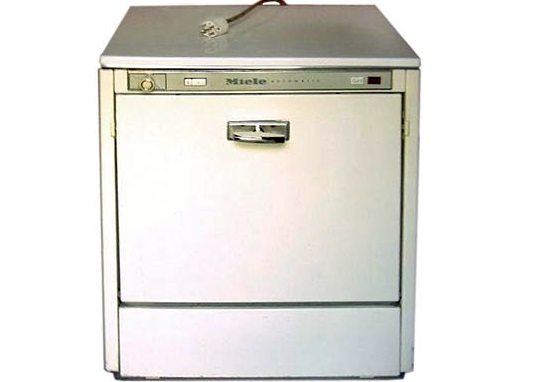
It’s difficult to say who invented the automatic dishwasher, but Miele filed a patent for the invention.
German engineers working for Miele decided not to stop there and in 1978 released an automatic dishwasher with microprocessor control. The first units with electronic filling were not reliable, but in a very short time all the shortcomings were eliminated. The cars turned out to be so successful that some elderly Germans did not want to part with them for 30 years.
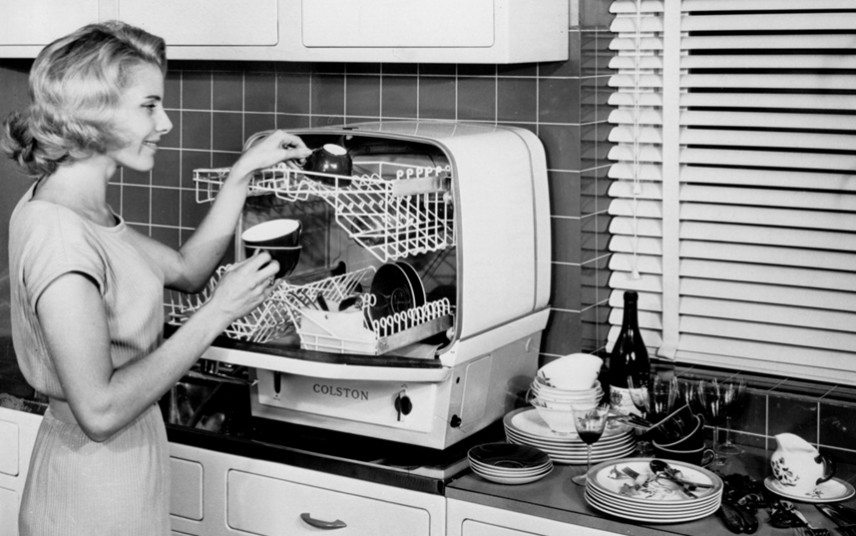
Currently, Miele and several dozen other major manufacturers of household appliances offer hundreds of models of dishwashers. Dishwashers no longer scare anyone, but quite the opposite, because more and more people want to equip their homes with dishwashers and this is very good news!
Interesting:
Reader comments
- Share your opinion - leave a comment
Categories
Washing machine repair


For buyers

For users

Dishwasher

















Add a comment